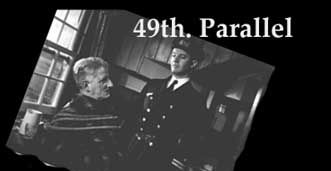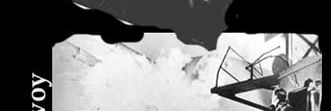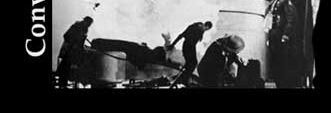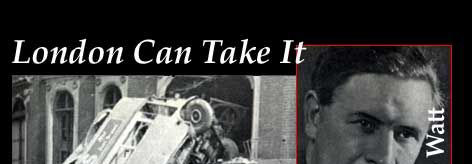





Although popular with audiences, the leading characters were upper class and far too privileged to represent the nation at war. The opening documentary sequence was clearly an 'add on' intended to avoid long narrative sections explaining why Britain was at war, and the other documentary sequences seemed ill-matched with the narrative. The Lion was just too clumsy a production to have a significant influence on British cinema. However, by 1940, other filmmakers were becoming aware that the realism of documentary film was often appropriate for feature films dealing with the war. As Roger Manvell explained, from 1940 some of the qualities of the documentary style began to appear in many industry produced war features - 'an understanding of emotional values and a faithfulness to the environment in which the film was set'. Manvell, cites such early war features as Convoy (1940) and 49th. Parallel (1941).16 But of all the innovations of the period, perhaps the most interesting were the official story documentaries produced for the Ministry of Information. The story documentary was a new cinematic form intended to realistically show the work of the armed and auxiliary forces and imaginatively wove together documentary and narrative style. These films were scripted but based on everyday incidents and acted by serving personnel. The first of these story documentaries, Target for Tonight, was intended to show the public exactly what the Royal Air Force was doing. promote the activities of the Royal Air Force in 1941-1942, Target for Tonight and Coastal Command. It addressed important propaganda themes, and made a significant contribution to the development of wartime realist cinema.

After enduring the hard blows of Dunkirk and the Blitz, what the British people needed to know was that the armed forces were hitting back, that not only could 'Britain take it' but equally was 'dishing it out' as well. At that time, only the 'long arm' of RAF Bomber Command was capable of hitting back and hurting enemy. Typically overstating the case, Prime Minister Winston Churchill told the cabinet in early September 1940, 'the bombers alone provide the means of victory'. Target for Tonight, made in early 1941 and released in August of that year, was central to this notion of hitting back at the enemy. Written and directed by Harry Watt, the film was a curious, but remarkably successful, mix of documentary and feature - a docudrama that used serving RAF personnel acting out a narrative that it was claimed showed only what the RAF were doing every night. Produced for the Ministry of Information by the Crown Film Unit, the film had an apparent official status denied to other features about the RAF.





